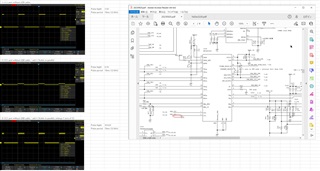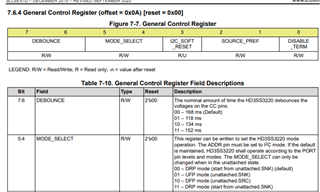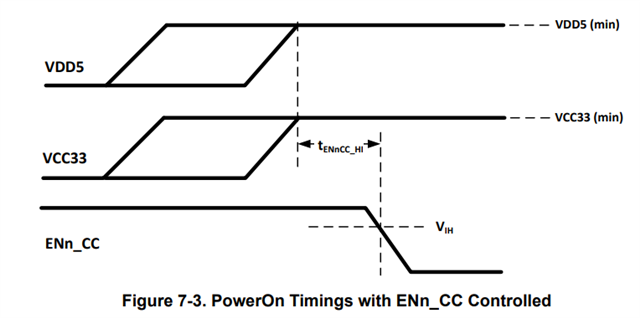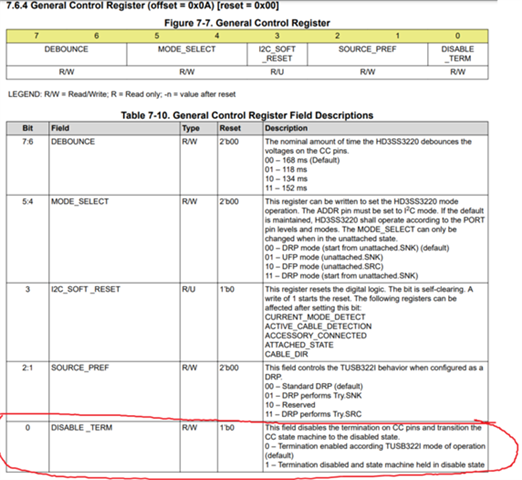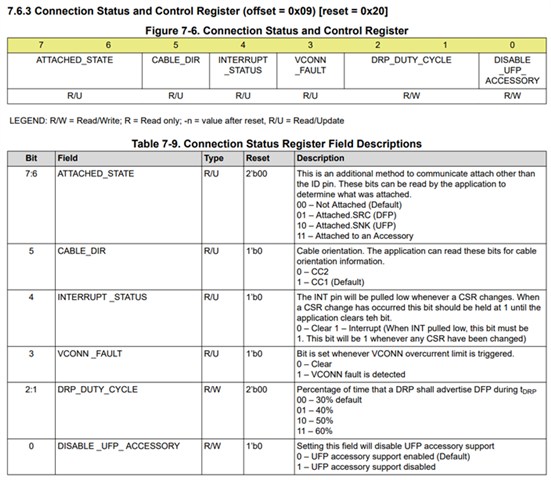Other Parts Discussed in Thread: 3220UFP-DGLEVM
Hi Experts,
I design my circuit board for USB Type-C interface with HD3SS3220, and checked the waveforms and functions. And I found some strange behaviors on CC1, CC2 ports.
I design my board as UFP and set the ports as below, (I attach a part of schematic)
PORT: GND, ENn_CC: GND
Now I do not connect any USB cable, i.e. CC1 and CC2 are opened exclude ESD passive device on them. I think each of CC1 and CC2 have internal pull-down resisters, around 5kohm for detecting Type-C rotation, however I observed 4.5V pulse with 80ms period. I show it as (1) in attached jpg file. It looks that there is no pull-down resistor. I tried to add 4.7kohm externally between CC1 and GND, then pulse level down to 344mV. Those are showed as (2) and (3). So I think there are no internal pull-down resistors. And this 80ms period noise appears on VBUS in some condition, of course with no USB connection. I guess it is caused by any noise conduction.
Is there any mistake of my design, or is this behavior natural?
Best regards,
Terry,
